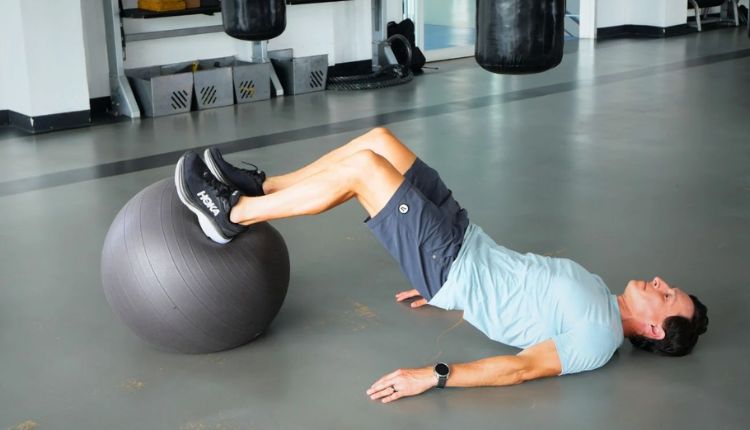The posterior chain—a collective term for muscles along the back of the body—supports movement, posture and strength. These muscles include the gluteals, hamstrings, spinal erectors, trapezius, latissimus dorsi and calves. Together, they contribute to the mechanical efficiency required for daily tasks and athletic performance. Strength coach Bret Contreras and other practitioners highlight the posterior chain as a foundation for strength, stability and injury resilience. Weakness or poor control in this system can disrupt neuromuscular coordination and promote compensatory patterns linked with overuse symptoms.
Functional strength refers to the ability to perform movements that carry over to real-world or sport tasks. The posterior chain provides structure and power for hinging, lifting, sprinting and stabilizing. Understanding how these muscles operate as an integrated unit clarifies their role in performance training, injury prevention and rehabilitation.
Key muscles of the posterior chain
The gluteus maximus is a primary hip extensor and one of the body’s most powerful muscles. It works with the hamstrings, which assist in hip extension and flex the knee. The spinal erectors stabilize and extend the spine, maintaining posture in loaded movements. The trapezius and latissimus dorsi support shoulder girdle position and pulling mechanics, especially during rows and pull-ups.
Although anatomically distinct, these muscles work together to manage load transfer from the ground up. Compound exercises that train the posterior chain typically recruit multiple joints and segments, reinforcing both mobility and stability.
Movement mechanics and load transfer
In lifting, the posterior chain helps transmit force between the lower and upper body. Hinge-based movements such as deadlifts and kettlebell swings rely on the glutes and hamstrings to generate hip extension, while the spinal erectors support neutral alignment. Squats, lunges and step-ups also engage these regions, though they involve more knee flexion and quadriceps contribution.
In pulling movements (for example, rows and pull-ups), the upper posterior chain is more active. The latissimus dorsi and trapezius contribute to shoulder extension and scapular control while the erectors support the spine. Together, these muscles enable controlled, forceful movement across planes.
Posterior chain in locomotion and stability
Walking, running and jumping all rely on posterior chain engagement. The glutes and hamstrings contribute to hip drive; the calves assist with ankle propulsion and balance. During gait, coordinated activation helps manage forward momentum and maintain upright posture.
Insufficient posterior chain strength is associated with inefficient movement and compensatory loading. When the hips are not driving extension effectively, the lumbar spine or hamstrings may assume excessive strain, increasing the likelihood of strains, low back discomfort or anterior knee pain.
Performance implications
In sport, posterior chain development is linked with sprint speed, vertical jump and power output. Strength-and-conditioning research suggests athletes with greater posterior-chain capacity often demonstrate improved acceleration, deceleration and change of direction. Practitioners, including Bret Contreras, note that not all lifts train the glutes to the same degree: squats and deadlifts engage them, but technique and quad-dominant patterns can shift load away from the hips. Glute-dominant drills such as barbell hip thrusts can emphasize peak hip extension.
Movement screens, force-plate testing and velocity tracking during compound lifts help identify imbalances or inefficiencies. Evidence-based programming often includes Romanian deadlifts, sled drags, bridges/hip thrusts, Nordic hamstring curls and trap-bar deadlifts.
Injury risk and compensation
Underdeveloped posterior-chain strength or control can raise injury risk, particularly in the lower back, knees and hamstrings. Common compensations include excessive lumbar extension, overuse of the quadriceps in tasks that should be hip-driven, and poor hip-hinge mechanics. In repetitive jumping, landing or sprinting, inadequate glute and hamstring contribution can shift stress to passive structures such as ligaments and tendons. Strengthening the posterior chain helps distribute load and protect tissues under dynamic conditions.
Role in rehabilitation
Posterior-chain training is widely used to restore motor control and reduce pain associated with movement dysfunction. After lower-back injuries, ACL reconstruction or hip surgery, reconditioning typically includes isometric and low-load activation (for example, bird dogs), progressive hip-extension work (bridges, hip thrusts, cable pull-throughs) and trunk stabilization. Rebuilding these patterns can improve trunk control, re-establish hip drive and reduce reliance on compensations.
Aging and long-term function
Aging is associated with loss of muscle mass and strength that affects the posterior chain. Reduced hip-extension strength can impair sit-to-stand ability, stair negotiation and gait speed, and is linked with higher fall risk. Programs for older adults often use hip hinges, resistance-band work and progressive sit-to-stand or box-squat variations to maintain independence.
Programming for functional strength
Functional strength is not just muscle size; it is coordinated force production in patterns that transfer to life and sport. The posterior chain should be trained to fire in sequence under varied loads and speeds and across planes of motion. Emphasize compound lifts, appropriate eccentric loading and tempo control to build both capacity and coordination. Use bilateral and unilateral movements, and pair them with trunk stabilization. Attention to alignment, intent and cueing helps avoid reinforcing compensations (for example, substituting lumbar extension for hip extension).
The posterior chain supports nearly every movement that requires force, balance and alignment. Its contribution to functional strength extends beyond aesthetics or isolated performance metrics; it underpins efficient, resilient movement across rehabilitation, everyday life and high-level sport.
